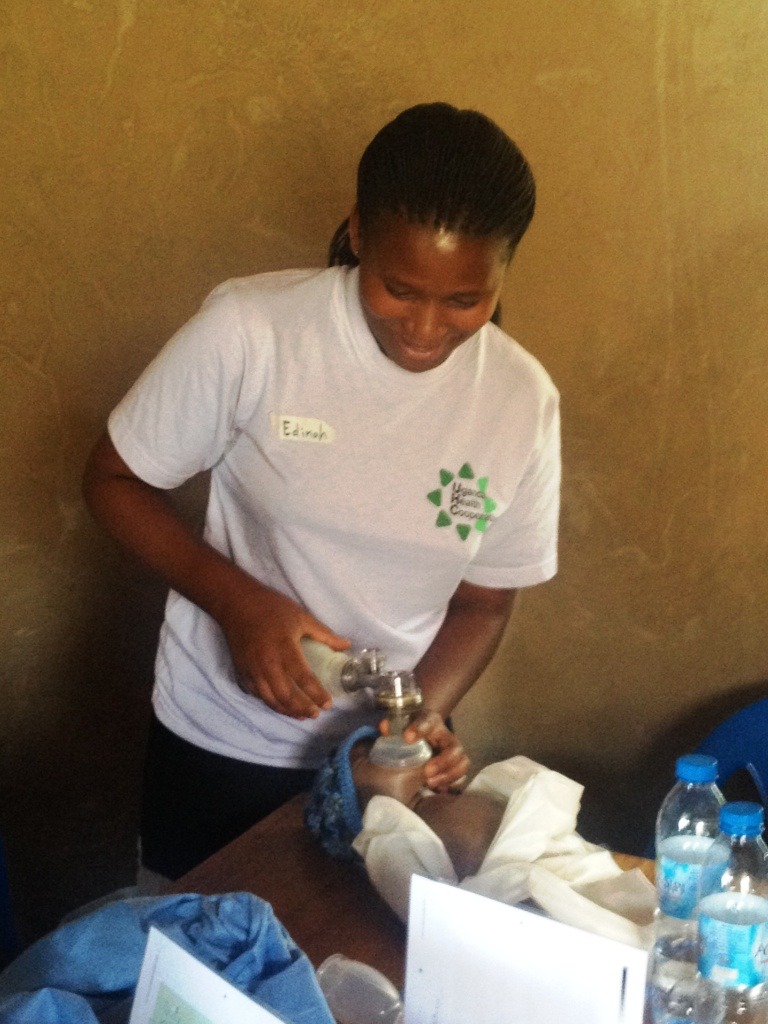 |
| Some of the staff at Nyakatsiro Health Center learning the life-saving protocol. |
The American Academy of Pediatrics has understood how important that critical moment of first breath is and developed a program to train birth attendants with the crucial first steps to be taken in order to assess that newborn and stimulate breathing. This is especially important in resource-poor areas, where there is a lack of equipment and health care professionals.
Started as Helping Babies Breathe, the program's name has changed to HELPING BABIES SURVIVE. The curriculum gives every birth attendant the skills to assess the newborn, support body temperature, stimulate breathing, and provide assisted ventilation, if needed, within the first "Golden Minute" after birth. The focus is on meeting the immediate needs of every newborn infant.
Since this program requires knowledgeable teachers to spread the training, one registered nurse, Debra Clairville, utilized her knowledge and skills to present the program at Nyakatsiro Health Center in Mitooma, Uganda. Along with the Center's trained midwives, she presented the neonatal assessment and resuscitation protocol to the Center's staff.
Ms. Clairville stated, "During my time here, I have seen too many babies die due to late initiation of rescue breaths and insufficient knowledge on appropriate emergency care techniques by the health center staff. Ten percent of babies face difficulty breathing in their first few minutes of life. Immediate skilled care means the difference between life and death in these situations. I believe that with proper training and resources, the health care workers in my area can help save the lives of babies who are born with breathing complications."
 |
| Class members hold certificates of completion; instructor Debra Clairville holds a young child. |
 |
| A staff member practices her skills on resuscitation doll. |
Click here: AURAS GUIDE



No comments:
Post a Comment